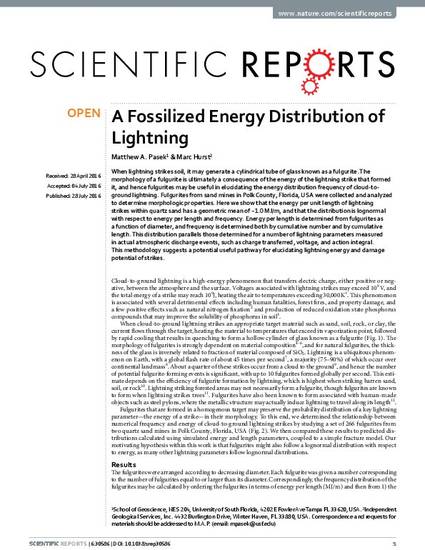
When lightning strikes soil, it may generate a cylindrical tube of glass known as a fulgurite. The morphology of a fulgurite is ultimately a consequence of the energy of the lightning strike that formed it, and hence fulgurites may be useful in elucidating the energy distribution frequency of cloud-to-ground lightning. Fulgurites from sand mines in Polk County, Florida, USA were collected and analyzed to determine morphologic properties. Here we show that the energy per unit length of lightning strikes within quartz sand has a geometric mean of ~1.0 MJ/m, and that the distribution is lognormal with respect to energy per length and frequency. Energy per length is determined from fulgurites as a function of diameter, and frequency is determined both by cumulative number and by cumulative length. This distribution parallels those determined for a number of lightning parameters measured in actual atmospheric discharge events, such as charge transferred, voltage, and action integral. This methodology suggests a potential useful pathway for elucidating lightning energy and damage potential of strikes.
Scientific Reports, v. 6, art. 30586
Available at: http://works.bepress.com/matthew-pasek/6/